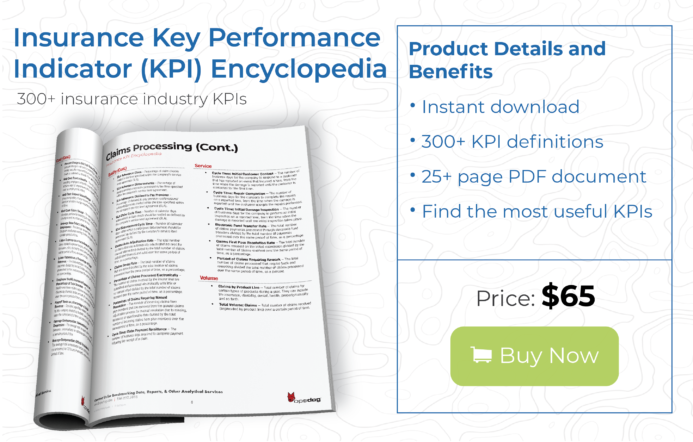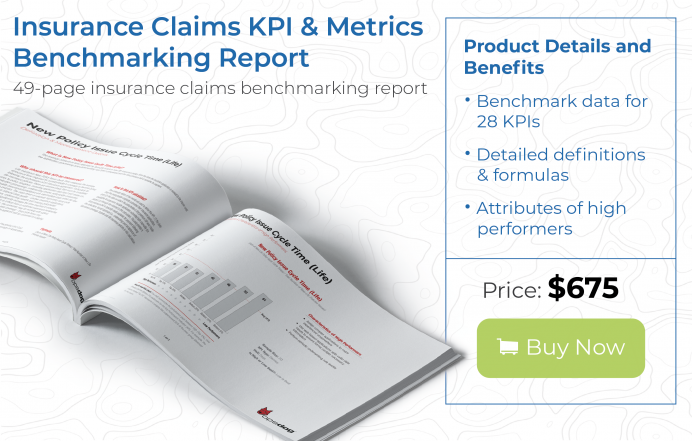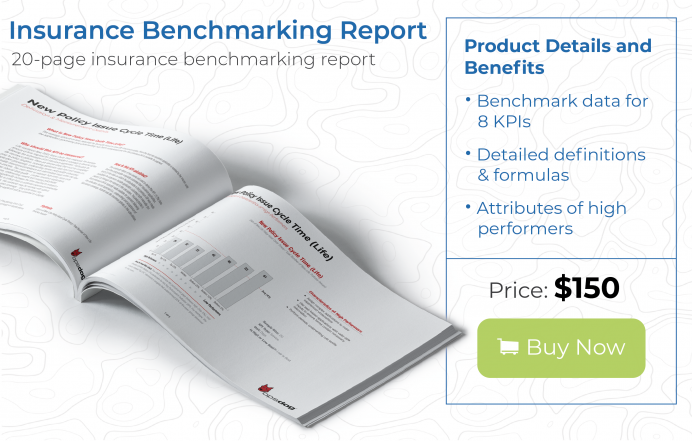Key performance indicators (KPIs) allow insurers to determine their strengths and weaknesses and where to focus resources and money. Tracking KPIs over time is the most effective way for insurers to figure out if the changes they are making–and the money they are spending–are actually improving agency performance.
What is an Insurance KPI?
Insurance key performance indicators (KPIs) for agency performance tracking can be defined as metrics, often expressed as ratios or percentages, that measure aspects of insurance agency performance that are directly aligned with insurer business goals. When looked at holistically and monitored over time, KPIs are a strong indicator of overall agency performance.
How Insurance KPIs can Improve Agency Performance
Which aspects of agency performance an insurer wants to improve determines which KPIs the insurer should measure and track. For example, an insurer that wants to improve how effectively they settle claims can use KPIs to track claims quality and the amount of time, on average, it takes to settle claims. They can also track how much it costs to process each claim.
As markets change, new competitors emerge, and customer demographics shift, insurers should be prepared to update the agency KPIs they track.
Once the insurer has an initial KPI benchmark, they can compare the KPI at regular intervals such as monthly or quarterly to determine if the KPI is moving in the right direction. KPIs take the guesswork out of whether or not adjustments to an organization, processes, employees, and technology, are helpful.
Most KPIs are quantitative, or objective, in that no interpretation is needed to calculate the KPI. A claim was either approved or denied. A customer either paid their premium or they didn’t. The number of new policies written is not debatable.
However, insurers should be sure to add qualitative, or subjective, KPIs to their performance tracking as well. For example, since claims is such a critical function—and since a poor claims experience can cause a customer to jump ship to a competitor—claims quality is a legitimate KPI even though it relies on auditors to judge how well the insurer handled a claim compared to the insurer’s best practices.
Insurance KPIs Focused on Improving Agency Performance
Improving agency performance requires a multi-faceted approach that touches on everything from organizational structure to employee morale to claims efficiency. Here are five insurance KPI metrics that insurers can track to improve performance.
Insurance Agency Performance KPI Metric #1: Employee Turnover Rate
Insurers often say that their employees are their most important asset, and employee turnover rate quantifies that sentiment. Employee turnover is expensive. It can cost an insurer 33% of an employee’s annual salary to hire a replacement. A high turnover rate is bad for employee morale as well.
Employee turnover rate measures an insurer’s ability to attract, develop, and retain high quality employees. For instance, perhaps the insurer is not doing a good job screening employees. Do employees understand what the job entails? Do they possess the required skills?
To calculate employee turnover rate, divide the number of employees leaving the insurer by the total number of employees, as a percentage.
Insurance Agency Performance KPI Metric #2: Claim Closing Rate
A long, drawn out claim settlement process is bad for the customer, and for the insurer. Claims that should close but are in limbo—either due to an adjuster backlog, missing information, or poor claims triage—are a very real drain on productivity. The higher the claim closing rate, the more effective the insurer, and the happier the customer. A low claim closing rate could be caused by understaffing, inadequate claims processor training, lack of claims auto-adjudication, or poorly defined claims adjudication rules.
To calculate claim closing rate, divide the number of closed claims by the total number of claims submitted, as a percentage.
Insurance Agency Performance KPI Metric #3: Claim Settlement: Outbound Quality
The claims settlement process can make—or break—the insurer/customer relationship. The outbound quality of claims settlement can negatively impact customer satisfaction, loyalty, and retention. But a poor outbound process also means higher operating costs for insurers, more rework for employees, and even claims leakage.
By auditing settled claims to determine if they meet quality standards, insurers can identify areas to improve. If claim settlement outbound quality is low, look for highly manual claim settlement processes, inefficient workflows, poorly trained or unmotivated employees, or a lack of clear communication between the customer and the insurer about claim status.
To calculate claim settlement: outbound quality, divide the number of claims that meet or exceed quality standards by the total number of claims settled, as a percentage.
Insurance Agency Performance KPI Metric #4: Operating Expense Per In-Force Policy
Every in-force (active and premium paying) policy brings in revenue—but there’s also costs associated with acquiring, underwriting, onboarding, and servicing these policies. Operating expense per in-force policy measures just how much each policy costs the insurer. Obviously, lower operating expenses are the goal. If operating expenses are high, look at staffing levels, workflow inefficiencies, marketing expenses, commissions, and errors requiring rework as potential problem areas.
To calculate operating expenses per in-force policy, divide total policy administration operating expenses by the number of in-force policies.
Insurance Agency Performance KPI Metric #5: Span of Control
While some insurers prefer a more hierarchical organizational structure, others feel that a flatter organization with little or no middle management allows the organization to be more efficient and agile, reduces costs, and improves employee morale. Also called management span, span of control measures how many employee report to mid-level policy administrator managers. A “tall” organization will typically have a higher management to employee ratio than a flat organization which tends to have many employees reporting to each individual manager.
To calculate, divide the number of employees who directly report to policy administrator managers by the number of managers.
Final Thoughts
A one-time assessment of a KPI is helpful as a benchmark, but the only way for insurers to actually move the needle on a KPI in the right direction is to track the KPI over time to see which of the changes they try actually improve agency performance, and which don’t.
Are you tasked with reducing and minimizing insurance claims leakage? Find out how to accelerate those efforts here!
For a full list of agency performance metrics other related insurance key performance indicators, download our Insurance Key Performance Encyclopedia here.
If you require additional assistance in developing a KPI inventory to benchmark insurance agency performance then you may find our Insurance Benchmarking Report helpful. For even more information on our Benchmarking Research and business intelligence implementation services, contact us here. OpsDog can help your insurance company build a KPI tracking plan and provide you with presentation-ready, high-quality deliverables.


